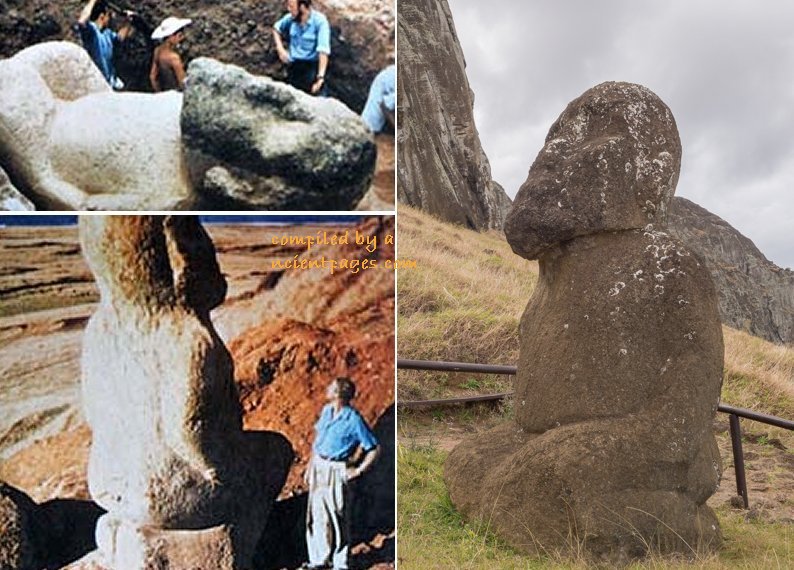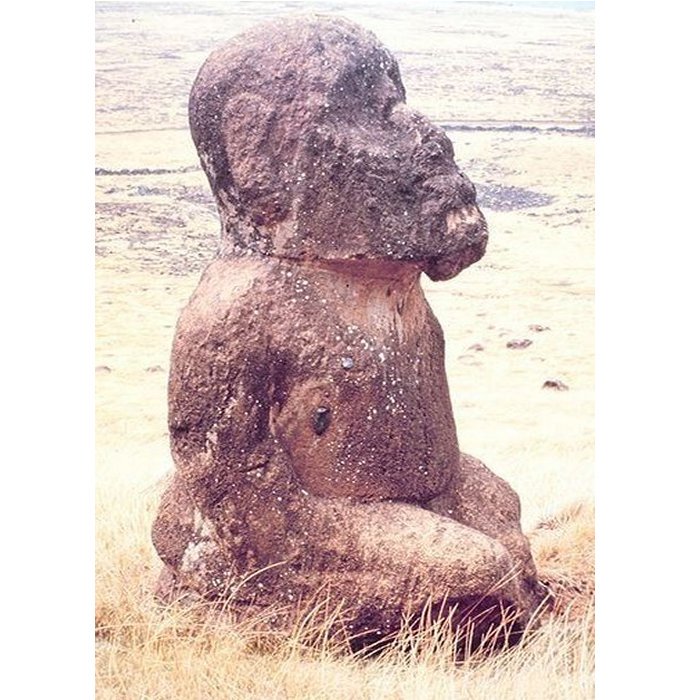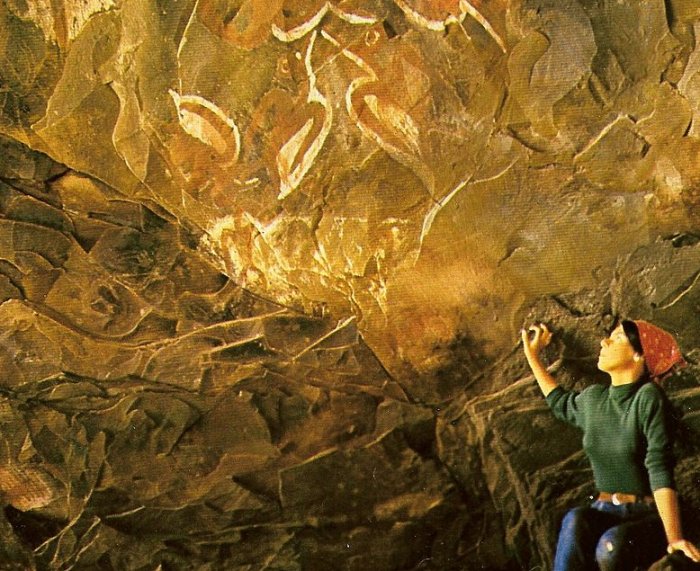Unusual Tukuturi Statue On Easter Island Remains An Unexplained Mystery
A. Sutherland - AncientPages.com - Easter Island keeps many ancient secrets.
One of them is an intriguing "kneeling moai or simply "Tukuturi" figure that was discovered on Easter Island by archaeologist Thor Heyerdahl's team in 1955.
The place of this most unusual discovery was the Rano Raraku quarry. Curiously, no other statues accompany this statue, which remains an unusual moai.
The statue's kneeling position catches our attention. Is the kneeling position a way to show admiration and respect toward his gods or is he perhaps, begging for mercy or forgiveness?
The statue of “Tukuturi” is also known as ‘tuku turi or simply ‘tuku’; it differs much from many other moai on Easter Island.
Why is the figure's location away from other sculptures? This figure differs much from other traditional statues on the island.
Unlike the other stone colossi, Tukuturi's facial characteristics are rounded, much more human-like when compared to the traditional, straight rectangular heads of the other moai.
If you look from the side, you could even see that this being has a small beard. But that's not all. The figure has also well-defined legs and it is kneeling with its hands resting on the knees.
Was Tukuturi A Famous Figure Or Just A Chorus Singer?
One legend says that this is a depiction of a famous moai sculpture erected to watch over future generations of the island's craftsmen.
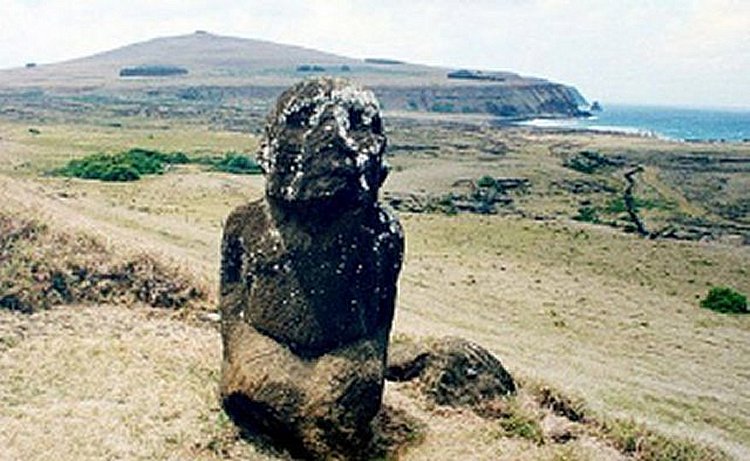 The only kneeling Moai at Easter Island. Photographed by Brocken Inaglory in November of 1998. Image credit: Brocken Inaglory - CC BY-SA 3.0
The only kneeling Moai at Easter Island. Photographed by Brocken Inaglory in November of 1998. Image credit: Brocken Inaglory - CC BY-SA 3.0
According to an ancient tradition, the posture of the mysterious “Tukuturi” was used by the men and women who formed the chorus in the festivals called riu, where the posture was known as’ tuku riu’.
Typical also of the singers was the slightly backward inclination of the trunk, the raised head, and the goatee (a style of facial hair incorporating hair on a man's chin but not his cheeks), all these features can be observed in this statue.
Tukuturi is made of red scoria from Puna Pau located on the outskirts of Hanga Roa in the south west of Easter Island. Puna Pau is the only source of red scoria that was used to carve the pukao (topknots) that they put on the heads of some of their famous moai figures.
However, Tukuturi sits at Rano Raraku, the tuff quarry and it is believed this statue is probably one of the last moai ever made.
Were Traditional Moai Created Before Tukuturi Or Was He, Their Predecessor?
It is not easy to answer this question and no one knows for sure but some researchers argue that Tukuturi may belong to a later period.
Tukuturi moai. Image credit: Crux - Public Domain
Still, the most common idea is that it was one of the first sculptures to be made - an early precursor of the traditional moai. However, it wasn't transported but left in the quarry because it was either damaged or never intended to be erected on a platform.
Perhaps we have to ask whether the mysterious kneeling Tukuturi really is "moai" figure, in the first place.
The statue's kneeling position catches our attention. Is the kneeling position a way to show admiration and respect toward his gods or is he perhaps, begging for mercy or forgiveness?
Is this the position of someone who will be sacrificed?
Among many theories, there is one suggesting that Tukuturi moai is connected to the Tangata manu cult of Easter Island, a traditional competition on Rapa Nui, which would make Tukuturi one of the last moai on the island to have been created.
Tukuturi remains an unsolved mystery because there are no satisfactory answers to some crucial questions regarding this curious figure.
Why is the figure's location away from other sculptures?
Why is Tukuturi kneeling? Why wasn’t the statue created out of the same material like other statues on the Easter Island?
Birdmen (Tangata manu) paintings in the so-called "Cannibal Cave". Storia Illustrata, year 1969. source
Father Sebastian Englert (1888 – 1969), a Capuchin Franciscan friar, Roman Catholic priest, missionary, linguist and ethnologist from Germany. He is known for his pioneering work on Easter Island.
He said that "masters who had built the beautiful Inca walls of the first period, were not also the creator of the mighty half figures who has made Easter Island so famous.
They created a series of simpler statues [like Tukuturi] with a rounded head and staring eyes, sometimes red tuff and sometimes of black basalt, but also already used the yellow-gray volcanic rock, which was so popular in the next period..." ("Aku-.Aku, T. Heyerdahl).
Written by – A. Sutherland - AncientPages.com Senior Staff Writer
Copyright © AncientPages.com All rights reserved. This material may not be published, broadcast, rewritten or redistributed in whole or part without the express written permission of AncientPages.com
Expand for referencessource:
Aku-.Aku, T. Heyerdahl
More From Ancient Pages
-
 Unexplained Behavior In People Found After Being Lost In National Parks – Strange Encounters With Dangerous Humanoids And The Little People
Featured Stories | Oct 27, 2024
Unexplained Behavior In People Found After Being Lost In National Parks – Strange Encounters With Dangerous Humanoids And The Little People
Featured Stories | Oct 27, 2024 -
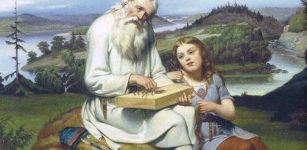 Vainamoinen – Sage, Sorcerer, Adventurer And Friend Of Ilmarinen In Kalevala Myths And Legends
Featured Stories | Nov 16, 2018
Vainamoinen – Sage, Sorcerer, Adventurer And Friend Of Ilmarinen In Kalevala Myths And Legends
Featured Stories | Nov 16, 2018 -
 Copyright Violations By Earth-Chronicles.com – Fake Site That Steals Content From Ancient Pages Daily
News | Dec 28, 2017
Copyright Violations By Earth-Chronicles.com – Fake Site That Steals Content From Ancient Pages Daily
News | Dec 28, 2017 -
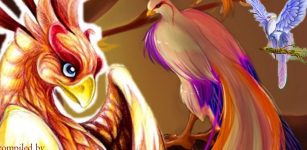 Mythical Beautiful Adarna Bird And Its Harmful Magical Power In Mythology Of Philippines
Myths & Legends | Jan 25, 2017
Mythical Beautiful Adarna Bird And Its Harmful Magical Power In Mythology Of Philippines
Myths & Legends | Jan 25, 2017 -
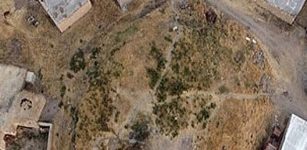 Clay-Jar Tombs With Child Corpses – Unearthed In Northwest Iran
Archaeology | Jun 28, 2020
Clay-Jar Tombs With Child Corpses – Unearthed In Northwest Iran
Archaeology | Jun 28, 2020 -
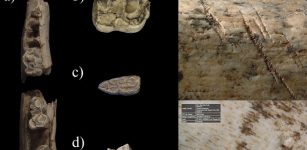 Neanderthal Hunting Camp Discovered In The Center Of The Iberian Peninsula
Archaeology | Aug 30, 2021
Neanderthal Hunting Camp Discovered In The Center Of The Iberian Peninsula
Archaeology | Aug 30, 2021 -
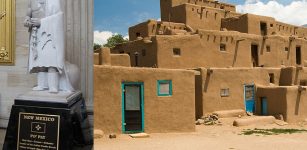 On This Day In History: Pueblo Indians Capture Santa Fe From The Spanish – On August 21, 1680
News | Aug 21, 2016
On This Day In History: Pueblo Indians Capture Santa Fe From The Spanish – On August 21, 1680
News | Aug 21, 2016 -
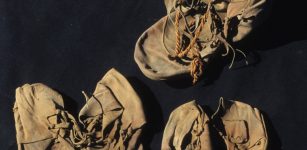 Unsolved Ancient Mystery: Why Were These Foreign Shoes Hidden In A Temple?
Archaeology | Mar 29, 2014
Unsolved Ancient Mystery: Why Were These Foreign Shoes Hidden In A Temple?
Archaeology | Mar 29, 2014 -
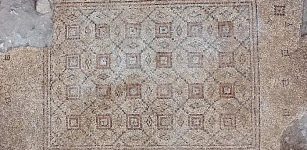 A 1,600-Year-Old Mosaic Accidentally Unearthed In Ancient City Of Yavne, Israel
Archaeology | Apr 26, 2021
A 1,600-Year-Old Mosaic Accidentally Unearthed In Ancient City Of Yavne, Israel
Archaeology | Apr 26, 2021 -
 Killer-Of-Enemies – Mysterious Non-Human Teacher And Hero Of The Apache Indians
Featured Stories | Nov 16, 2020
Killer-Of-Enemies – Mysterious Non-Human Teacher And Hero Of The Apache Indians
Featured Stories | Nov 16, 2020 -
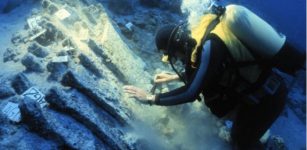 Scientific Disagreement Over The Bronze Age Tin Ingots From The Uluburun Shipwreck
Archaeology | Sep 25, 2023
Scientific Disagreement Over The Bronze Age Tin Ingots From The Uluburun Shipwreck
Archaeology | Sep 25, 2023 -
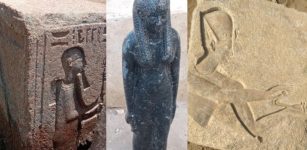 Pharaoh Ramses II Comes One Step Closer To The Gods In The Company Of Hathor, Sekhmet and Ptah – Statues Discovered
Archaeology | Aug 10, 2020
Pharaoh Ramses II Comes One Step Closer To The Gods In The Company Of Hathor, Sekhmet and Ptah – Statues Discovered
Archaeology | Aug 10, 2020 -
 On This Day In History: Supernova Observed In The Constellation Cassiopeia Was Recorded – On August 4, 1181
News | Aug 4, 2016
On This Day In History: Supernova Observed In The Constellation Cassiopeia Was Recorded – On August 4, 1181
News | Aug 4, 2016 -
 Mysterious Ancient Ruins Of Engaruka – Why Was The Site Abandoned?
Featured Stories | Apr 18, 2017
Mysterious Ancient Ruins Of Engaruka – Why Was The Site Abandoned?
Featured Stories | Apr 18, 2017 -
 King Geirrod Betrayed His Brother Agnar And Sent Him To Die But Justice Finally Prevailed
Featured Stories | Feb 14, 2024
King Geirrod Betrayed His Brother Agnar And Sent Him To Die But Justice Finally Prevailed
Featured Stories | Feb 14, 2024 -
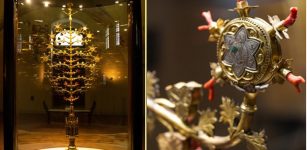 Missing Pieces Of The Magnificent Golden Tree Of Lucignano Discovered
Archaeology | Nov 6, 2023
Missing Pieces Of The Magnificent Golden Tree Of Lucignano Discovered
Archaeology | Nov 6, 2023 -
 Selene – Greek Goddess Of The Moon And Myth About Love, Jealousy And Punishment
Featured Stories | Jan 24, 2019
Selene – Greek Goddess Of The Moon And Myth About Love, Jealousy And Punishment
Featured Stories | Jan 24, 2019 -
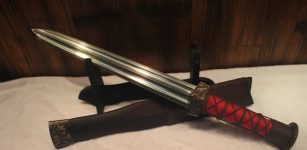 Deeper Look Into Chinese Swords Throughout The History Of The Dynasties
Featured Stories | Sep 19, 2018
Deeper Look Into Chinese Swords Throughout The History Of The Dynasties
Featured Stories | Sep 19, 2018 -
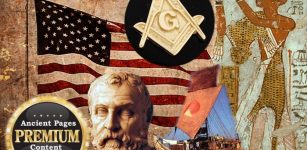 Freemasons Secrets – American Democracy Is Part Of An Ancient Universal Plan – Egyptian Temple And Legendary Expedition Hold The Clues – Part 2
Civilizations | Jul 13, 2018
Freemasons Secrets – American Democracy Is Part Of An Ancient Universal Plan – Egyptian Temple And Legendary Expedition Hold The Clues – Part 2
Civilizations | Jul 13, 2018 -
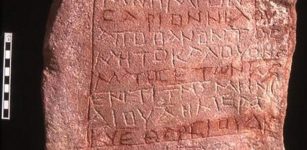 Nabataean Culture Lived On Long After Their Kingdom Disappeared – New Evidence
Archaeology | Feb 27, 2019
Nabataean Culture Lived On Long After Their Kingdom Disappeared – New Evidence
Archaeology | Feb 27, 2019

